As youngsters, many individuals harbored dreams of donning the title of “cosmonaut,” particularly during the Soviet era when the exploration of outer space was in its nascent stages. However, the path to becoming an esteemed member of the cosmonaut corps is a highly exclusive one: prospective candidates must satisfy a multitude of stringent criteria, endure an arduous selection process, and even then, there is no guarantee of ever beholding our magnificent blue planet through the porthole of a spacecraft. In this article, we will elucidate the essential attributes that a bona fide astronaut must embody, as well as the steps that individuals take in order to traverse the celestial realm.
The main requirements for astronauts: speed, altitude, strength
Let’s begin by discussing the prerequisites for astronauts. We will focus on the requirements specific to the Russian Federation. If you meet the following criteria, you can confidently apply for the cosmonaut selection tests:
- You must hold citizenship of the Russian Federation;
- You must be no older than 35 years;
- You must possess a higher education degree (either as a specialist or master’s) in engineering, scientific, or flight-related fields (a complete list is available on the Roscosmos website);
- You must have a minimum of three years of professional experience in your field;
- You must have a strong command of the English language (at least at the level required by non-language universities);
- You must possess a comprehensive understanding of the history of manned spaceflight;
- You must be in excellent physical condition and free from chronic illnesses.
One of the key characteristics of a prospective astronaut is good health. Even the most minor illnesses that you experience on Earth can pose a significant challenge in space. For instance, if you suffer from motion sickness during transportation or amusement park rides, you can kiss your dreams of space travel goodbye: only individuals with an exceptionally robust vestibular system can adapt to and perform tasks in a weightless environment.
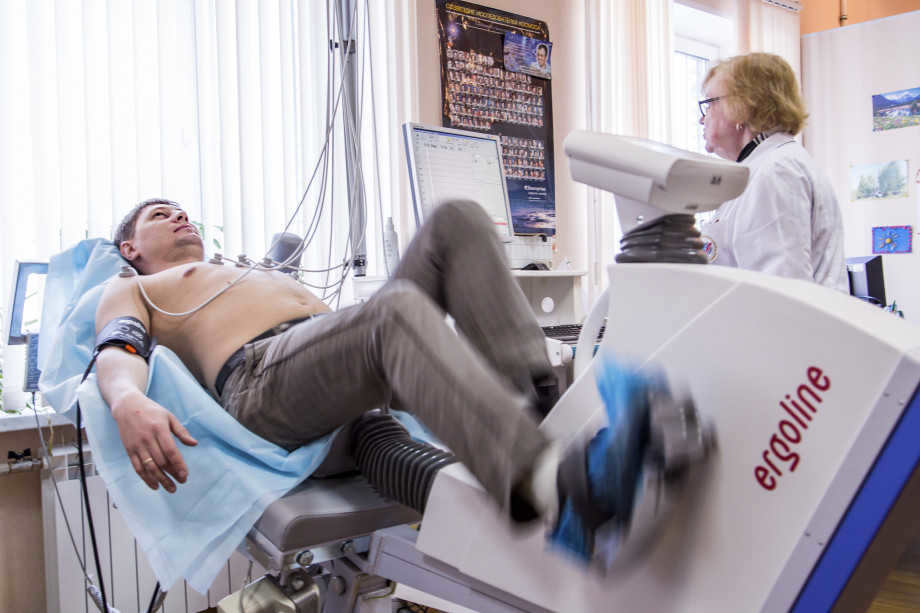
It is also important to consider the anthropometric requirements: they must be tailored to fit. To be accepted into the astronaut program, certain physical parameters are necessary:
- Standing height – 150-190 cm;
- Sitting height – 80-99 cm;
- Shoulder area width – up to 52 cm;
- Distance between axilla corners – up to 45 cm;
- Chest circumference – 94-112 cm;
- Hip width in sitting position – up to 41 cm;
- Foot length – up to 29.5 cm (shoe size 46).
Once all the measurements have been taken, prepare for extensive discussions with psychologists: merely having physical endurance is not sufficient for performing work in space – one must possess nerves of steel. The aspiring astronaut must be composed, level-headed, and prioritize the fulfillment of their professional duties in any situation. It is evident that an individual with a volatile temper or, conversely, excessive melancholy and lack of willpower would struggle to maintain healthy relationships with their team over an extended period of time within the confines of a spacecraft. Conflict situations are entirely unacceptable in the realm of space exploration.
Physical training is relatively straightforward: the fastest way for candidates to be eliminated during this stage of the test. In reality, the “space” standards are similar to the GTO standards. Throughout the tests, you will need to compete against other applicants in terms of strength, endurance, speed, agility, and coordination. For example, you will need to complete a 1-kilometer run in 3 minutes and 35 seconds, complete at least 14 pull-ups on the bar, or perform trampoline jumps with a 360-degree rotation. And this is just a small part of the program.
Furthermore, having a good memory, high levels of concentration, punctuality, and the ability to make quick decisions in stressful situations will be important advantages.
The occupation of an astronaut is highly idealized, although it is common knowledge that it involves hard work. And the challenges begin on Earth: the conditions on Earth are vastly different from those in space, so the chosen candidates are subjected to rigorous tests – this is the only way to determine how the body will respond. there.
However, you will not be immediately placed in the centrifuge, of course: if you pass the selection process, you will first become an “applicant” and then a “candidate”, and you will undergo two years of comprehensive space training. Prior to engaging in practical exercises, you will thoroughly and systematically study flight theory, grasp the principles of onboard systems, and gain an understanding of the intricate nature of complex space equipment.
After completing the initial two-year period of group training, you will embark on another phase that entails approximately 150 exams, tests, and credits. Only those who excel will be selected to join the esteemed crew. Once you become a part of the cosmonaut squadron, the next step is to prepare for the actual flight, a process that typically spans 18 to 24 months. This is when the real excitement begins.
Illustrations of objects in uncontrolled descent
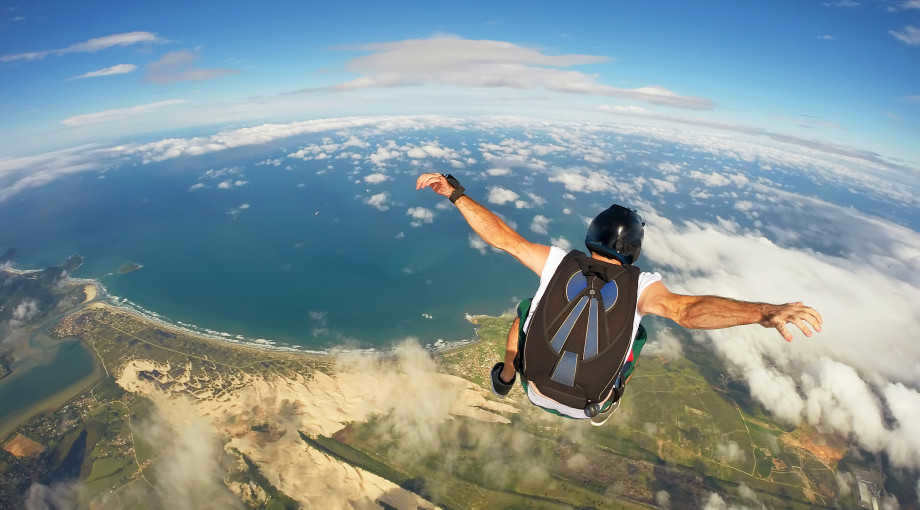
Parachute training is a crucial aspect of astronaut training, and its significance goes beyond teaching them how to safely exit a descending spacecraft. This training plays a pivotal role in developing qualities like composure, focus, and multitasking skills. During the parachute jump, astronauts are required to perform a range of tasks, such as solving mathematical problems, providing updates on their well-being, deciphering ground signals, and more. And, of course, it is imperative not to overlook the crucial step of opening the parachute.
“Entered” the spacesuit – and on the “exit”!
A fascinating detail that all astronauts should be aware of: a spacesuit is not worn – it is “entered” through a unique opening situated on the back. The opening cover also functions as a bag that holds the primary life support systems. Once you learn how to “get inside” a spacesuit, you can venture into outer space. Naturally, not directly into the actual one – initially on the simulator. It is referred to as the “exit”.
This process is quite challenging. The weight of a single spacesuit is 120 kilograms! Additionally, it is important to note that movement in space will solely rely on the use of your hands, as you will be unable to utilize your legs for assistance. Even something as simple as making a fist will require significant effort, as the tension required will be similar to that of using an expander. Throughout the training, you will not only learn the proper method of donning the spacesuit, but also how to effectively operate all of its systems, such as ventilation and cooling, among others.
Centrifuge
can be paraphrased as “a machine that uses centrifugal force to separate substances of different densities.”

Astronauts undergo immense physical stress in their work. In order to prepare their bodies for these extreme conditions, centrifuges are utilized. Currently, there are two centrifuges located in Star City – the TsF-7 and TsF-18. The TsF-18, which stands at a height of 18 meters, is capable of generating a maximum overload of 30 units. This level of overload is considered to be incompatible with sustaining life. During the Soviet era, cosmonauts were subjected to overloads of up to 12 units, but nowadays, the levels are more moderate, reaching up to 8 units.
What is the Future for Astronauts?
Have you ever wondered about the path to take if you become an astronaut? It is common knowledge that becoming an astronaut is a challenging endeavor, but few consider what happens once you achieve that goal. The main space programs are scheduled a decade in advance, with the International Space Station (ISS) being the primary destination. As a “newcomer,” you would spend at least a month on the station, acquiring the necessary skills for future missions.
So, what will your role be in space? Primarily, you will be engaged in various scientific research activities. This will involve conducting experiments in biology and medicine, such as growing plants, developing medical drugs, and testing new life support systems, among other tasks.
Are you longing to explore new planets? Chances are, you won’t have the opportunity to do so. However, there is a greater likelihood of making it to the Moon: the Russian lunar program is scheduled for 2031.
Dreaming of becoming an astronaut and embarking on a journey through the vastness of the universe aboard a spaceship is perhaps one of the most common childhood aspirations. While it may remain a fantasy for most, there are individuals who are genuinely determined to temporarily depart from their home planet in search of the boundless realms of space. Goroda+’s correspondent investigated the knowledge and skills required of astronaut applicants, the training they undergo on Earth, and whether they hold a belief in the existence of extraterrestrial civilizations.
Who qualifies to become an astronaut?
Educational Background:
To qualify as a future astronaut, one must possess a higher education in either technical or flight-related fields. It is worth noting that even individuals with a background in construction engineering can apply, although the preference is given to Russians with at least three years of experience in the aviation or rocket and space industry. Military pilots also have the opportunity to become astronauts; however, they must leave the Armed Forces before being eligible for enrollment in the squadron. In addition to the necessary education and experience, applicants must demonstrate a basic understanding of space technology and possess a natural aptitude for learning about it. Furthermore, fluency in spoken and written English is a requirement for all applicants. While American astronauts learn Russian, Japanese cosmonauts undertake the challenge of learning both Russian and English. Therefore, aspiring astronauts should start considering their career path while still in school, focusing on technical subjects such as physics and math, as well as dedicating time to mastering English and engaging in sports activities.
Furthermore, candidates’ personal attributes, mental well-being, and adherence to behavioral standards are considered during the selection process. Additionally, their level of professional drive, personality orientation, leadership abilities, and communication skills are evaluated. Most importantly, motivation is taken into account as experts believe that without it, space exploration would be impossible.
Physical information:
Every candidate who aspires to become an astronaut must meet specific physical requirements, including height, weight, and foot size. The ideal weight for an astronaut ranges from 50 to 90 kilograms, while the preferred height falls between 150 and 190 centimeters. These measurements are meticulously calculated to the centimeter: the candidate’s seated height should be between 80 and 99 centimeters, and the maximum hip width should not exceed 41 centimeters. The foot size should not exceed 29.5 centimeters (equivalent to a Russian size 46), and the chest circumference should be within the range of 94-112 centimeters. Additionally, candidates must be under 35 years old at the time of selection.
Qualities of character:
The statement “if you truly desire it, you have the capability to journey into outer space” holds significant importance for all aspiring astronauts, as the path to the stars entails years of rigorous training and various assessments. This implies that a prospective astronaut must possess a strong motivation and an unwavering desire. Furthermore, a candidate must exhibit immense patience (as they will encounter numerous years of waiting) and possess a keen aptitude for learning, as they will face over 100 exams and five to six years of academic study. Additionally, it is essential for any astronaut to possess a sense of humor, a positive outlook on life, and optimism; after all, how else can one conquer the vast expanse of the universe?
What is the process of preparing for space on land?
If you have successfully met all the requirements mentioned above, there is no need to relax just yet. The next step is to undergo two years of comprehensive space training and pass the examination to become a “test cosmonaut.” Following this, there are an additional two years of group training and a further one and a half to two years of training after being assigned to a crew.
These extensive training programs are designed to prepare future cosmonauts for the most unforeseen scenarios and ensure that their actions become automatic. Throughout the training, candidates learn how to operate the spacecraft, familiarize themselves with all the equipment used in space, and develop skills in celestial navigation. They also continually train and assess their physical capabilities, participating in activities such as parachuting, flying airplanes, and experiencing weightlessness in a hydrolab. Thanks to this comprehensive training, astronauts will be fully prepared for any challenges they may face both in orbit and beyond.
The conditions in space can be extremely stressful for the human body, so astronauts follow a carefully balanced diet that is rich in microelements and vitamins. To ensure food safety and preservation, all meals are prepared on Earth using the freeze-drying method. This process involves freezing the food, extracting all moisture, and then packaging it in vacuum bags, tin cans, or tubes. Finally, the food is sterilized to eliminate any potential microbes.
Despite having such storage facilities, the food is still tasty: the astronauts themselves taste every dish before it is added to the menu. The diet is incredibly diverse, including a range of cereals, meats, chicken fillets, vegetables, fruits, cheeses, cakes, and candies. There are also many soups available, including borscht, and even bread, although it must be crumb-free. In the past, regular bread was not available as the crumbs would float around the cabin and could be inhaled into the respiratory system. Interestingly, many astronauts’ favorite dish is cottage cheese, and their American colleagues on the ISS often trade their food for it. However, not everyone can follow such a varied and balanced menu. Being a vegetarian in space would be difficult and even dangerous. Legumes, which are a common source of plant protein on Earth, are prohibited in space due to the risk of causing gas.
The Tale of an Astronaut
Cosmonaut Sergey Ryazansky experienced all the challenges of training and years of preparation for his space mission. Our team had the chance to meet this courageous individual and hear about his professional insights.
Despite the popular belief that boys only dream of interstellar journeys, Sergei Ryazansky had always aspired to be a scientist rather than an astronaut. Initially, everything seemed to be going according to plan as Ryazansky graduated from the Faculty of Biology at Moscow State University and secured a position at the Institute of Medical and Biological Problems. At the institute, Ryazansky worked with animals that were being sent into space. However, in 2003, his life took an unexpected turn when the institute formed an experimental team of doctor-astronauts and Ryazansky was granted acceptance into the program. Nevertheless, it was not without its challenges. In 2005, Sergei obtained his astronaut diploma only to discover that he would never have the opportunity to travel to space as the Americans had already reserved all the scientist seats on the “Soyuz” spacecraft for many years to come. Despite this setback, the allure of space continued to captivate Sergei. “By some miraculous turn of events, I was granted the chance to try out for the position of flight engineer. Over the course of a year and a half, I successfully completed 105 required exams and became the first flight engineer without an engineering degree,” he proudly reminisces.
Sergey has a simple approach to shifting his mindset and finding positivity in space: he takes pleasure in the feeling of weightlessness, admires the breathtaking views of our planet, and relies on his sense of humor to cope with stressful situations. Ryazansky believes that having a good sense of humor is just as important as being patient: “A cosmonaut needs to have a cosmic sense of humor because patience is required in abundance. Additionally, the ability to learn is crucial. Being an astronaut involves much more than just space travel, contrary to popular belief. It requires continuous growth, acquiring new techniques, adopting new approaches, and conducting experiments. This makes life incredibly interesting. The life of an astronaut is truly fulfilling and diverse, thanks to the acquisition of new knowledge and experiences. However, amidst all these pursuits, the grandeur and beauty of space always take center stage.”
Sergey has already spent more than 300 days in space and hasn’t encountered any extraterrestrial beings yet. However, he maintains his belief in the existence of life on other planets. As a scientist, he desires firsthand evidence. “It would be disheartening to be alone in the vastness of the universe. I believe in aliens, but I require tangible proof. Once I come across something small, fluffy, and friendly and shake its paw, then I will truly believe in alien life. But for now, all we have are unexplained phenomena,” the astronaut asserts. Simultaneously, he remains confident that aliens are benevolent and harmless. “I am an optimist. Kindness should prevail throughout the universe.”
Sergei Ryazansky, a Russian test cosmonaut, Hero of Russia, and author of the book “Amazing Earth,” shared insights on how to pursue a career as an astronaut in the past and the requirements for aspiring astronauts today during his appearance on our “Radio School.” He also addressed the question of whether women are accepted as astronauts.
Who is more impressive: astronauts or Elon Musk?
Throughout the years, the allure of space has not diminished. It is simply that we have shifted our focus away from its promotion. Individuals journey to the same space station, carry out similar duties, and no one inquires about the remarkable breakthroughs accomplished during multiple expeditions.
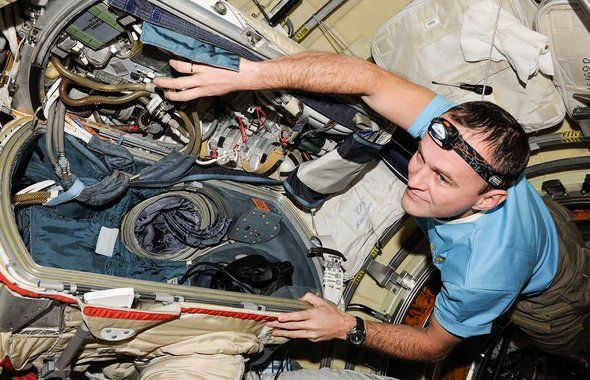
During my visit to China a few years back, I couldn’t help but notice the prevalence of state propaganda. It became evident that in order to be considered a model citizen and contribute to society, aspiring individuals were encouraged to pursue a career in space exploration. The demand for various professionals in this field was staggering – scientists, engineers, programmers, military personnel, and even journalists were all deemed crucial. It was inspiring to witness the passion and dreams of Chinese high school students who aspired to work in the realm of space-related endeavors.
Why has Elon Musk become a role model for many children? The reason is simple: he possesses the skill of effective presentation and knows how to put on a show. In our generation, our parents taught us that boasting was improper. As we grew older, we realized that it’s not boasting, but rather public relations. Unfortunately, we lack the knowledge of how to effectively promote ourselves in a positive way. There are only a handful of scientists who are able to popularize science and even fewer individuals who possess the ability to captivate an audience. Elon Musk is one such individual who knows how to turn anything into a captivating spectacle. One of his noteworthy events includes the launch of Tesla with a mannequin, which was truly remarkable.
How to pursue a career as an astronaut
Instead of envisioning a future among the stars, my childhood dreams revolved around the wonders of science. Specifically, I aspired to become a biologist, fueled by my parents’ frequent camping trips and my deep admiration for the natural world.
In the 1990s, during my time at Moscow University, the scientific landscape was bleak. Many scientists at that time faced a difficult decision: either transition into the business sector or seek opportunities in the West. I chose to pursue both paths. Initially, I embarked on an entrepreneurial journey with my friends, but eventually, I found myself drawn to the United States. After gaining valuable experience there, I returned to Russia and realized that my detachment from the scientific realm had been in vain.
Driven by a newfound determination, I joined the Institute of Medical and Biological Problems of the Russian Academy of Sciences, an esteemed institution dedicated to the medical support of space missions and biosatellites. It was here that I reconnected with my passion for science and set my sights on the ultimate goal of becoming an astronaut.
At that point in time, I was already a proud parent with a growing family, but my salary as a junior researcher was far from satisfactory. One fateful day, I received the news that the Russian Academy of Sciences was seeking scientists to join the cosmonaut squadron. Their criteria for selection were strict – individuals had to be exceptionally healthy or exceedingly intelligent. Fortunately, I fell into the former category and was chosen as the sole candidate. This marked the beginning of my incredible journey into the unknown, as I had no prior knowledge of what lay ahead in the realms of cosmonautics and flight preparation.
I found myself thrust into a highly regimented system, reminiscent of a military organization. The Star City, where I was stationed, functioned as a military unit in every sense of the word.
Formerly, we were civilians, but we were employed by a military organization. Nowadays, Roscosmos and its subsidiaries are classified as civilian organizations, but we still adhere to a daily training regimen, strict discipline, and irregular working hours. The duration of the journey was considerable, as I am a cosmonaut-researcher, a scientist by profession, whereas the majority of our colleagues are either military pilots or engineers.
At a certain moment, my boss contacted me and informed: “Sergey, it turns out you’re not a terrible person, but your chances of going to space are nonexistent. You don’t have any opportunity, start searching for a new job”. They didn’t immediately dismiss me, they provided me with some time, but at that particular instant, I comprehended that I needed to demonstrate to them that I was capable. Consequently, I participated in the Mars-500 experiment, engaged in numerous ground experiments, and successfully defended my doctoral thesis to establish my intelligence, to establish my worth. Strictly the “Mars-500” experiment caught the attention of my superiors – they decided that as an exception, I could be granted the chance to retake all the exams, but this time as a flight engineer. As a result, I am one of those exceptional astronauts who acquired a second degree – a test cosmonaut.
Nowadays, individuals have a wider range of possibilities, as there is no longer the initial open enrollment period where any individual who meets the prerequisites can attempt to join the astronaut team. In the past, the primary focus was on exceptional health, but now average normal health is acceptable, with more emphasis placed on education and adaptability.
A contemporary cosmonaut or astronaut must possess a diverse skill set. It is crucial for us to be completely interchangeable.
The squadron’s training includes meetings with fascinating individuals: instructors, astronauts who have completed space missions – this alone is already captivating. During interviews, there is a strong emphasis on having a broad range of interests and knowledge. Previously, English was considered an optional skill, but now it has become one of the main requirements for admission. In celebration of Astronautics Day, we organized a space-themed English lesson with Yandex.Praktikum, where we discussed various topics such as the intricacies of space travel, space food, and even music. We even had the pleasure of involving my Italian colleague Paolo Nespoli, and together we even managed to make pizza in space.
When you have an intense craving for pizza, you casually mention it to the International @Space_Station Boss during a live public event 😉 Thank you Kirk for surprising us with unexpectedly delicious pizzas! #VITAmission pic.twitter.com/WstvG3IKr1
– Paolo Nespoli (@astro_paolo) December 2, 2017
The primary abilities of an astronaut
In space, similar problems to those on Earth arise, necessitating the same skills. However, the challenges in space are much more concentrated due to the thin 1.5 mm walls of a space station, constant stress, and the ever-present danger to one’s life. Additionally, astronauts must work alongside crew members who were assigned rather than chosen, dispelling the myth of psychological compatibility being the basis for astronaut recruitment.
International crews are formed, with each country nominating their own representatives. Once aboard, it becomes crucial for astronauts to establish relationships, as their lives depend on one another. Despite being ordinary individuals, conflicts can arise due to different mentalities and religious upbringings. Suddenly thrust into these conditions, mature adults must navigate these challenges.
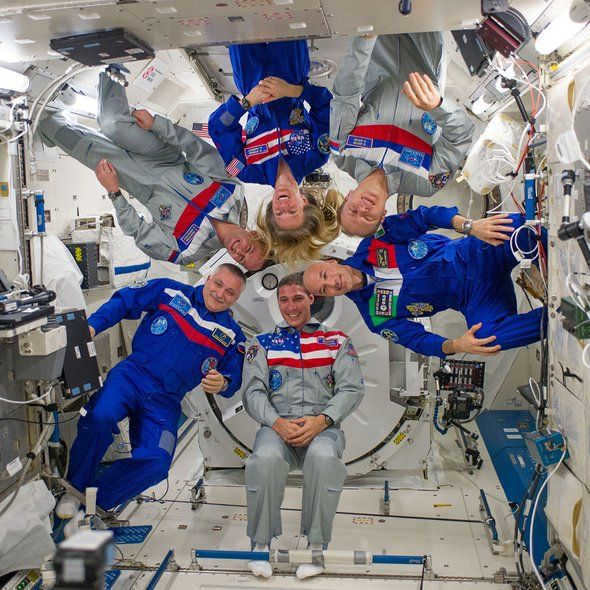
Indeed, individuals encounter similar challenges on Earth, in various professions, and in business. It holds immense significance to establish a comfortable and positive atmosphere among the crew. Heaven forbid that an unforeseen event occurs, and time is no longer measured in seconds, but in fractions of seconds. The crucial factor lies in fostering mutual understanding within the team.
When conventional methods of relaxation and stress relief are unavailable (such as petting a cat, embracing a spouse, or spending time with friends), an individual may unintentionally project their negative emotions onto those around them. It is essential to learn how to effectively manage such situations.
You must acquire the skill of expressing frustration in a considerate and polite manner. Instead of using offensive language, you are expected to say “fi” as it provokes annoyance. However, it is crucial that your words do not cause harm to the individual, as your survival relies on them. Nonetheless, it is important that your message is effectively conveyed. To achieve this, you begin by establishing connections: you step away, compose yourself, carefully choose your words, and return. The field of psychology plays a significant role in space exploration.
Are women allowed to become astronauts?
Men have a consistent hormonal level, making them physiologically primitive. However, women face different challenges depending on their menstrual cycle phase, and their requirements are equally high.
Currently, we have a female member in our astronaut team named Anya Kikina. Anya is a radio broadcaster from Altai and a master of sports in rafting. She is known for her incredible strength, both physically and intellectually. Additionally, she is extremely determined and hardworking. Despite being a part of the cosmonaut team for over 10 years, Anya has yet to go to space. However, she is part of the crew for 2022 and will have the opportunity to fly soon.
Speaking of popularization, a recent development has been the introduction of a Barbie doll modeled after Anya Kikina. However, Anya herself is not fond of this idea and feels quite embarrassed by it. She points out that she hasn’t even had the chance to fly or accomplish anything significant yet, and yet a doll has already been created in her likeness. Nevertheless, this serves as an indication of how we can promote interest in astronautics. A young girl who sees or plays with such a doll may aspire to be like Anechka and develop a curiosity for space exploration.
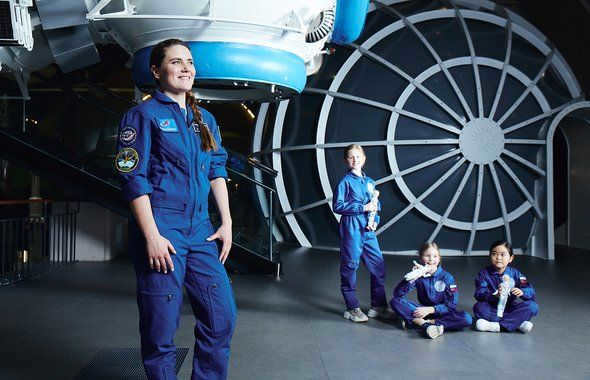
Unveiling the Secrets of the International Space Station
Undoubtedly, the International Space Station (ISS) serves as an advanced state-of-the-art scientific laboratory. It facilitates a wide range of experiments encompassing various fields such as physics, biology, chemistry, medicine, and sociology, all conducted in the realm of outer space. These endeavors involve groundbreaking research, the development of novel materials, and the cultivation of extraordinary crystals that hold significant value on our home planet. Additionally, the ISS serves as a platform for carrying out unparalleled medical experiments, exploring uncharted territories in the field of healthcare.
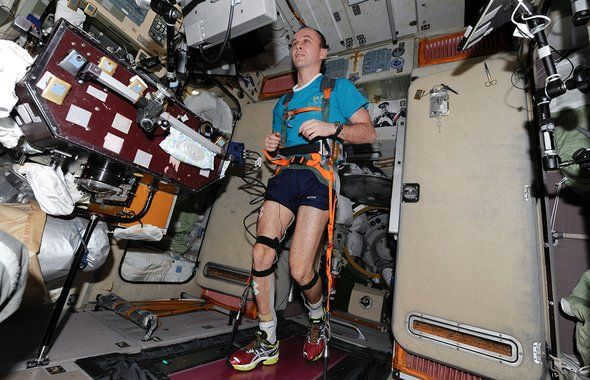
Recently, a groundbreaking achievement was made in space exploration as scientists successfully placed a 3D bioprinter in orbit. This remarkable device was utilized to fabricate thyroid cartilage, marking a significant milestone in the field of medical science. The potential implications of this technology, once adapted for use on Earth, are transformative in terms of healthcare. It holds the promise of creating custom-made organs using the patient’s own cells, thereby revolutionizing the treatment of damaged organs. The International Space Station serves as a crucial platform for conducting such cutting-edge experiments, which are instrumental in advancing our understanding and developing new technologies that will ultimately enhance our quality of life. It is imperative that we continue to invest in space exploration and raise awareness about its importance.
Our colleagues at NASA have launched the global initiative called “Tales from Space”. There are numerous similar projects, but the profound understanding that investing in the promotion of space exploration equates to investing in the future is still lacking.
Listen to the complete interview with Sergey Ryazansky here. The discussion took place on the “Radio School” show – a collaboration between Mela and the radio station “Govorit Moskva” focusing on education and upbringing issues. The studio is frequented by teachers, psychologists, and other experts. The program airs on Sundays at 17:00 on the “Govorit Moskva” radio station.
Featured on the cover: Sergei Ryazansky during his inaugural spacewalk on November 9, 2013. Photo: NASA
When it comes to space, people often have romanticized ideas, similar to those of a teenage girl. They envision cool starships, “Star Wars” adventures, and exciting journeys to other planets. However, the reality is far from these fantasies. Space is a dangerous and inhospitable environment that can pose serious threats to human health, both inside and outside the confines of a spacecraft.
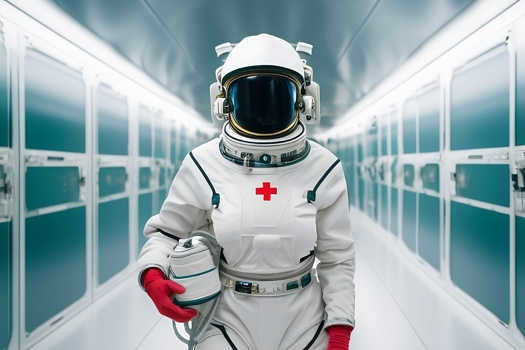
Microgravity
One of the key factors impacting the health of astronauts is microgravity. Initially, it may seem enjoyable and exciting – floating around and orbiting…
However, prolonged exposure to microgravity can have several detrimental effects on the body, some of which may be irreversible. For instance, the absence of gravity can negatively affect bone density, muscle strength, and cardiovascular function.
In space, the back and leg muscles, which are responsible for maintaining posture on Earth, become essentially useless. As a result, the body experiences minimal strain, leading to a potential loss of up to 20% of muscle mass within a span of 5-11 days.
Additionally, as a result of metabolic disruptions in space, an individual experiences a monthly loss of approximately 1.5% of their bone tissue. This condition resembles osteoporosis and primarily impacts the pelvic and hip bones, as well as the lumbar region.
Is there any method to combat this issue? To a certain extent, yes. Regular training and physical activity are key. Astronauts aboard the International Space Station engage in daily exercises to strengthen their neck, back, and limb muscles. Additionally, their diet must consist of calcium-rich foods, in addition to taking dietary supplements.
The ISS is equipped with treadmills and other exercise machines as well. Astronauts are secured to these machines in order to engage in exercise and prevent muscle atrophy.
To assist astronauts, IMBP RAS has developed a suit called “Penguin” that we previously discussed. This suit simulates Earth’s gravity in space by utilizing rubber harnesses that apply a load to the body.
Furthermore, in a weightless environment, the redistribution of body fluids occurs (since we are composed of approximately 60% water) as gravity no longer pulls blood downwards.
The upper portion of the body becomes more saturated with blood compared to the lower portion. Consequently, the kidneys begin to eliminate fluid from the body and the sensation of thirst diminishes. This poses a considerable risk of dehydration. Therefore, astronauts must actively consume water, even if they do not have a strong desire to do so.
The heart no longer needs to pump blood as vigorously, leading to the muscles of the heart shrinking and the heart itself becoming smaller and more rounded, resulting in a decrease in plasma content. This reduction in plasma content is also responsible for the puffiness and roundness of the face.
Prior to returning to Earth, astronauts undergo training in “Chibis” suits. These suits have ribbed trousers with a metal coil that creates negative pressure on the lower body. The purpose of this training is to encourage blood flow from the head to the legs, thereby conditioning the body’s cardiovascular system.
However, despite these measures, astronauts who have spent an extended period of time in orbit are unable to stand on Earth for more than ten minutes without difficulty.
Being in space also has an impact on the vestibular system, which is located within the head and is responsible for perceiving the body’s position. On Earth, this organ automatically maintains a straight body position and enables effortless walking. However, in orbit, it becomes ineffective, requiring astronauts to rely on their vision to orient themselves.
In addition, the sense of smell and taste also weaken in space, although the exact reason is still unknown. Astronauts develop a preference for spicy and flavorful foods, often bringing hot sauces like Tabasco with them to the International Space Station.
Radiation
One more factor that puts human health at risk in space is radiation. Space is filled with diverse types of radiation, including solar radiation and cosmic rays. All of this can harm the body’s DNA and cells, leading to various diseases. The most common outcome of radiation exposure is cancer, although it is not the only one.
Overall, space radiation poses a threat to deep space exploration. The doses that astronauts will have to endure during interplanetary flights are much higher than those received in Earth’s orbit.
Just to give you some perspective: on our planet, the average annual radiation exposure from natural sources ranges from 1 to 10 mSv (millisievert). Anything above 100 mSv is considered dangerous and has the potential to cause various types of cancer. Astronauts in orbit around Earth receive a dose of radiation ranging from 200 to 250 mSv per year. However, if you venture out into outer space, the radiation levels can skyrocket. At a distance of ten radii from Earth, the daily radiation dose can reach up to 600 mSv, which is three times higher than the dose received in orbit.
Invisible barriers: why are women rarely seen in space anymore?
When a spacecraft ventures beyond low-Earth orbit, it encounters the radiation belts that surround our planet. These belts are formed due to Earth’s magnetic field and act as a repository for radiation. The Earth has two such belts: an internal one located at an altitude of 4000 km and an external one located at an altitude of 17000 km.
During the Apollo missions, people crossed the radiation belts for the first time. At that time, this was one of the known risks associated with radiation during flight preparations. Fortunately, the astronauts did not receive a significant amount of radiation exposure because their time in the belts was brief, and the flight paths were strategically chosen to minimize exposure to intense radiation.
However, even outside of these belts, there are still potential health risks from cosmic rays and solar-proton storms due to the elevated levels of radiation in outer space.
As a result, scientists today are developing special methods of protection against radiation. These methods involve the use of shields and materials that can absorb radiation. These measures help to partially safeguard against the development of radiation-related illnesses and genetic mutations, as well as protect equipment from the harmful effects of charged particles.
Living in Isolation
How do you maintain a sense of normalcy after experiencing isolation? It turns out that it can be quite challenging. Prolonged periods in space can lead to various psychological and emotional changes in individuals.
Feelings of loneliness, confinement in limited spaces, absence of natural light, and separation from the Earth’s atmosphere, as well as loved ones, can sometimes result in depression, anxiety, irritability, and other mental health issues. As a result, astronauts receive regular psychological support, which includes counseling and stress management training, in order to promote their mental well-being while in space. It’s similar to the kind words exchanged over audio and video connections in space-themed movies, but even more effective.
Immunity
Speaking of immunity, it is worth mentioning that being isolated from Earth and being exposed to microgravity and radiation can weaken the immune system of astronauts. As a result, their bodies become more susceptible to infections and other diseases.
But where do these infections come from? Well, not from aliens. For instance, Russian scientists discovered during the “Periodont-2” experiment that pathogenic microorganisms thrive in the mouths of cosmonauts while in space. To prevent inflammation (since there are no dentists on the ISS), special hygiene kits such as the “Comfort-1M” set have been created.
However, it’s important to note that changes in the microflora in the astronauts’ bodies affect not only their oral cavities but their entire bodies as well.
Disturbance in the balance of the gut microbiota can lead to severe digestive disorders, and in the context of space travel, it becomes a major concern: water is scarce and personal hygiene is limited to the use of wet wipes. The gut microbiota plays a crucial role in maintaining overall health, including immune function, digestion, and various other bodily processes. Research conducted in space has revealed a decline in the population of beneficial lactobacilli and bifidobacteria in the intestines, while pathogenic microorganisms thrive and dominate.
Ultimately, just like in the TV ads, everyone was saved by yogurt! Well, not exactly yogurt: to tackle the issue, Russian scientists have developed a special fermented milk product called “ProbioSpace” with probiotics, which is prepared directly on the ISS using a dry concentrate containing lactobacilli. This concentrate was studied as part of the “Probiovit” experiment.
As a result, this yogurt-kefir alternative turned out to be promising in terms of its probiotic capabilities and its resistance to antibiotics. This is likely due to the fact that, in response to the increased radiation levels on the station, the bacteria produce additional protective measures.





